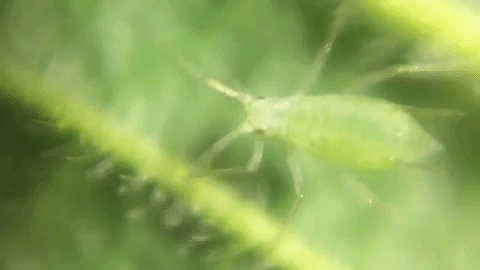My unpopular opinion is that spiders are fine
I've always been cool with spiders
That is, until I moved to the U.S. and found out there are actual black widows over here. Turns out when I know something can kill me I get all kinds of nightmares. Anyway, I've only gotten up close and personal with the perfectly safe arachnids of the UK, and here's some of what I got.
House spiders love the autumn
Come September, the behemoths of the arachnid world—house spiders—make a ton of appearances. That's because autumn is the mating season. Should you have been fortunate/unfortunate enough to have one cross your path, chances are it was a male, recognisable by the gargantuan palps attached to the head.
With the help of a rather tall man, I managed to grab this lad for some macro action. I didn’t keep him more than 30 minutes or so (the spider, not the tall man) because it was obviously unhappy being trapped. And when I let it out, it wasn't exactly slow moving. So, why do they do that thing when they run half way across the room and stop like some total creeper menace? It’s actually because they’ve run out of steam and need a rest, so try to give them a break. (Pun accidental, but purposefully kept.)
Non-aggressive palps
Those bulbs tho. They're kinda terrifying. The palps aren't aggressive though, they're for mating. Stop reading if you've no interest in this process. They suck up sperm inside the palps to inject the females with. Yup. The fangs are located on the front of the face, hanging underneath.
What do you do in the bath?
If you've found a bath-time friend, it didn’t climb up the plughole—it fell in. The u-bend stops them from being able to climb up, so flushing them "back" down isn't the kindest. They’re so big it’s most likely that their tarsi—the little hooks insects have instead of feet—are too large to hook onto the surface flaws of your bath to get back out.
They live there too
Oh, and they've not snuck inside to prep for the winter. They're permanent residents, having adapted to the conditions of living inside houses over thousands of years. We tend to spot them come autumn since they go on the hunt for the ladies. As it happens, if you set one free outside, you’re not actually doing them a favour—they'll likely die from the cold. Similarly, spiders that have adapted to live outside wouldn't last long in the house.
The rumours aren’t true
Turns out this macro edition is all about myth busting. So, let’s talk about eating: Spiders don’t actually eat by sucking their prey’s blood. It is, in part, similar to how a fly feeds—digestion happens on the outside. Orb web spiders will catch their prey, wrap it in silk, vomit on it to soften and liquefy it, and then chew up the more solid parts and drink the liquid. And that obviously sounds disgusting.
Hanging out with friends
Alright, here's something a bit cool—some spiders can be social. At least, the Avondale spiders are. They live in huge groups, averaging around 100 spiders. These guys are the ones they used in Arachnophobia, since they’re not only huge (around the size of your palm) but also pretty safe and placid to work with.
However bulldog ants couldn’t care less about keeping the peace; it’s been observed they take no prisoners when it comes to ousting and killing these spiders, all in the name of territory. (Thanks New Scientist.)
Anyway. I can’t say I’d be delighted to see another one of these chaps above my head before I turn out the light, but I’m certainly cool with them hanging about the place. When I'm in the UK.















